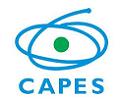PCL and PLA-PEG nanocapsules co-loaded with methotrexate and DHA for breast cancer treatment
Publicado em: Encontro de Saberes 2017
Evento: II Mostra da Pós-Graduação
Área: CIÊNCIAS DA VIDA
Subárea: NANOBIOTECNOLOGIA
Órgão de Fomento: Coordenação de Aperfeiçoamento de Pessoal de Nível Superior
| Palavras-chaves |
| polymeric nanocapsules, methotrexate, DHA |
| Resumo |
| Introduction: Methotrexate (MTX) is a classic antitumor drug used for the treatment of breast cancer but like others antitumor drugs, it causes severe side effects and drug resistance. Among alternatives, the combination of docosahexaenoic acid (DHA), a long-chain polyunsaturated fatty acid and MTX has been reported as superior compared to MTX alone. Thus, this combination of MTX and DHA in a polymeric nanocarrier, as nanocapsule (NC), is an innovative alternative to further overcome drug resistance, increase drug efficacy and reduce toxicity. Aim: To develop poli-ɛ-caprolactona (PCL) and polylactide-block-polyethylene glycol (PLA-PEG) NC containing DHA and MTX through ion-pairing strategy with laurylamine (LA) to improve MTX encapsulation and to evaluate their physicochemical characteristics. Methods: The NC were prepared using the nanoprecipitation method and characterized for size, polydispersity index (P.I.) and zeta potential (ZP) by dynamic light scattering (Zetasizer Nanoseries Nano-ZS-Malvern). The drug encapsulation (DE%) was assayed by ultrafiltration/centrifugation and quantified by a validated HPLC/UV method. Results: The formulations were prepared with the addition of MTX and LA in the organic phase in order to form an in situ ion-pair and the aqueous phase was acidified to pH 5. Both formulations were considered a monodisperse colloidal suspension. The PCL-NC and PLA-PEG-NC had a size of about 225nm and 177 nm, and ZP 25mV and -2mV, respectively. The DE% was 31% for PCL-NC and 55% for PLA-PEG-NC. Conclusion: The cationic ion pair was effective to encapsulate MTX. The PLA-PEG polymer reduced the mean size of the NC by reducing the interfacial tension between organic and aqueous phase, the PEG chain was also capable to hide the positive ZP of the formulations. These findings suggest that the hydrophobic ion-pairing to co-encapsulate MTX and DHA in a polymeric NC is a promising strategy. Acknowledgments: INCT-NANOFARMA, FAPESP, CNPq, CAPES, FAPEMIG. |





